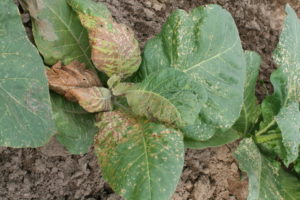
Thrips Flight and TSWV Risk Assessment Report – April 22, 2020
This is the third of our weekly TSWV and tobacco thrips risk assessment updates. Cool weather has continued to …


El inglés es el idioma de control de esta página. En la medida en que haya algún conflicto entre la traducción al inglés y la traducción, el inglés prevalece.
Al hacer clic en el enlace de traducción se activa un servicio de traducción gratuito para convertir la página al español. Al igual que con cualquier traducción por Internet, la conversión no es sensible al contexto y puede que no traduzca el texto en su significado original. NC State Extension no garantiza la exactitud del texto traducido. Por favor, tenga en cuenta que algunas aplicaciones y/o servicios pueden no funcionar como se espera cuando se traducen.
Inglês é o idioma de controle desta página. Na medida que haja algum conflito entre o texto original em Inglês e a tradução, o Inglês prevalece.
Ao clicar no link de tradução, um serviço gratuito de tradução será ativado para converter a página para o Português. Como em qualquer tradução pela internet, a conversão não é sensivel ao contexto e pode não ocorrer a tradução para o significado orginal. O serviço de Extensão da Carolina do Norte (NC State Extension) não garante a exatidão do texto traduzido. Por favor, observe que algumas funções ou serviços podem não funcionar como esperado após a tradução.
English is the controlling language of this page. To the extent there is any conflict between the English text and the translation, English controls.
Clicking on the translation link activates a free translation service to convert the page to Spanish. As with any Internet translation, the conversion is not context-sensitive and may not translate the text to its original meaning. NC State Extension does not guarantee the accuracy of the translated text. Please note that some applications and/or services may not function as expected when translated.
Collapse ▲
This is the third of our weekly TSWV and tobacco thrips risk assessment updates. Cool weather has continued to …
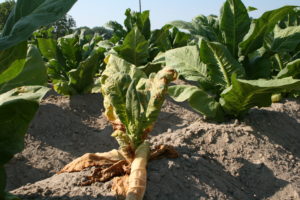
This is the second of our weekly TSWV and tobacco thrips risk assessment updates. Last week’s cool temperatures pushed …
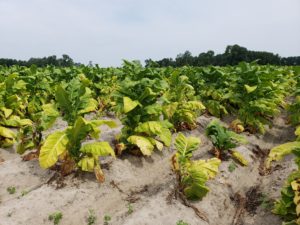
Managing tomato spotted wilt virus (TSWV) in North Carolina tobacco requires both pre transplant and post transplant decisions, which …
We are thrilled to announce the publication of the North Carolina Organic Commodities Production Guide! We’ve added new chapters …
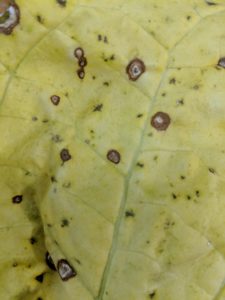
Environmental conditions this growing season have been conducive for several pathogens in flue-cured tobacco. Frogeye leaf spot (Cercospora nicotianae) has …
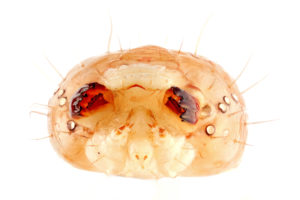
Tobacco budworms (Heliothis veriscens) and corn earworms (Helicoverpa zea) are two common crop-damaging caterpillars. They both feed on a …
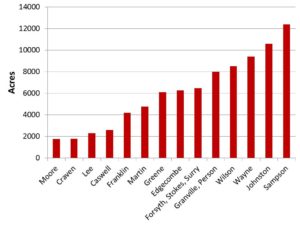
As part of our annual flue-cured tobacco production surveys, we ask county extension agents questions about current insect pest-control …
The North Carolina Department of Agriculture & Consumer Services (NCDA & CS) is offering organic growers the opportunity to …
North Carolina is now accepting applications for the Organic Certification Cost share program. Growers, Handlers and Processors will be …
The per-capita consumption of processed tomatoes has increased steadily in recent years. This has been …
The tomato is a warm season crop. With special production practices you can produce your …
The onion is a cool season crop that will withstand moderate freezes. It may be …
This publication discusses growing and harvesting head lettuce, the most important salad vegetable grown in …
Producing asparagus crowns for sale or use is simple and profitable. Careful attention to details …
Though impossible to measure the incidence of neighbor complaints against farmers, North Carolina public policy …
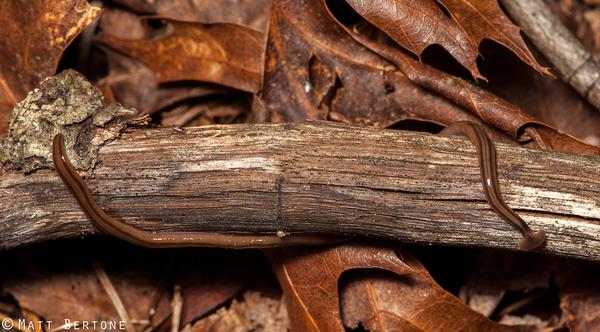
This factsheet offers information on the identification and management of various flatworms that may be …
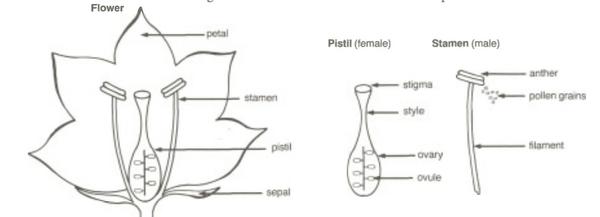
This guide presents basic facts about seeds, including how they develop, how to store and …